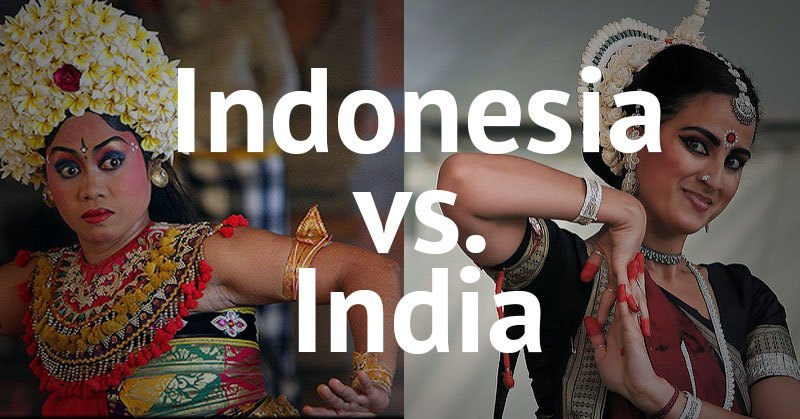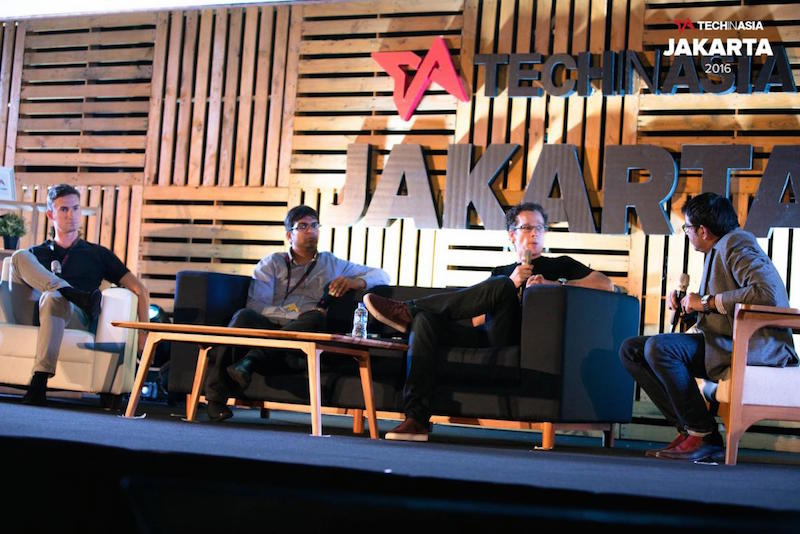
Photo credit: Brendan Lally (r) and W Sulisto (l).
India and Indonesia’s tech ecosystems have a lot in common. A popular thesis is that Indonesia lags five years behind and that we’ll see it follow a similar tech development trajectory.
In some ways that’s true. Venture capital flowing into Southeast Asia is at a similar level now as it was in India in 2011.
VCs and entrepreneurs familiar with both countries think it’s more complicated than that.
“It’s an apples to bananas comparison,” Dirk van Quaquebeke, partner at venture capital firm Beenext, put it. His firm began investing in early-stage startups in India and Indonesia some years ago.
Dirk had on on-stage chat with Pieter Kemps – partner at Sequoia Capital, a VC with big-ticket investments in both countries – and Amit Lakhotia, who recently joined Indonesia’s Tokopedia via India’s Paytm, at Tech in Asia Jakarta 2016.
The three came up with some unique ways to approach the Indonesia vs India question and tips that could help Indonesian entrepreneurs avoid some of India’s mistakes.
The power of Indomaret
Indonesia might lag behind India in things like the amount of venture capital flowing in, but it’s ahead in organized retail, Amit says. “Places like Indomaret and Alfamart do not exist in India.”
The two convenience store chains have thousands of outlets spanning the archipelago. Smart startups have begun incorporating these stores as online-to-offline transaction points for payments or product delivery.
Geography and logistics
India, with its many mega cities, sees a broader geographic distribution of wealth. In Indonesia, wealth is concentrated in Jakarta and a few larger cities, mostly on the island of Java.
Logistics, too, is better developed in India. But what might sound like a big disadvantage for Indonesian entrepreneurs can also be seen as an advantage.
An uneven distribution of goods in Indonesia means there’s a lesser need for discounting. If there are few options nearby, people don’t buy online primarily for cheaper prices but rather to have a wider variety to choose from.
Spending power

Dirk van Quaquebeke, Amit Lakhotia, and Pieter Kemps, in conversation with moderator Sudhir Syal (l-r).
Pieter says that the spending power of Indonesia’s emerging middle class is higher than in India. “There’s more willingness to pay,” he observes.
Talent scarcity
Indonesia’s biggest worry is a scarcity of talent compared with India.
The operating cost of an ecommerce startup in India is five times that of Tokopedia
“The real difference began 20 years back when Infosys started and employed engineers. India has 10 million engineers – that didn’t happen here,” says Amit.
India has great technical universities that bring people to the US to work at Facebook or Google before coming back. India also has the advantage that a large part of its population is proficient in English.
What has started changing, Pieter says, is that Indonesians with experience working overseas are now starting to come back.
Learning from India’s mistakes
It may not be the best for Indonesia’s startup industry if its funding trajectory follows India’s path.
“In India a lot of companies have raised a lot of money and hired a lot of people, they have become bloated. It explains some of the writedowns. The operating cost of an ecommerce startup in India is five times that of Tokopedia. Ola’s is significantly higher than Go-Jek,” Pieter points out. Sequoia is an investor in both Go-Jek and Tokopedia.
“The willingness is to pay higher here, while costs a lower. Indonesia is fundamentally stronger on the economic level.”
Indonesia’s first wave is strong
Indonesia’s digital economy is just starting out, and it does not have the history of software development India has. But there’s one big advantage Indonesia can build on: people are already online all the time.
“The first wave [of tech entrepreneurs] in India had to educate people to come online. The only way to get them was ABCD: Astrology, Bollywood, Cricket, or Discounts,” Dirk jokes. Discounts convinced users to try online shopping, but it became a bad habit.
“Tokopedia didn’t operate with discounts,” he continues. Japanese firm Beenos, the main LP in Dirk’s fund Beenext, is an early investor in Tokopedia.
“It spent reasonably up until one-and-a-half years ago. Then it was a strategic choice to spend money,” he says.
“It’s the same with Uber and Grab – these are strategic choices to spend money and grab the market. You are in a black hole environment, in which spending means you suck everything in. This is fair enough. But spending can’t be the strategy to get people onto your platform.”
This is part of the coverage of Tech in Asia Jakarta 2016, our conference that took place on November 16 and 17.
This post India vs. Indonesia: How investors like Sequoia think about it appeared first on Tech in Asia.
from Tech in Asia https://www.techinasia.com/india-versus-indonesia-how-investors-think-about-it
via IFTTT
No comments:
Post a Comment